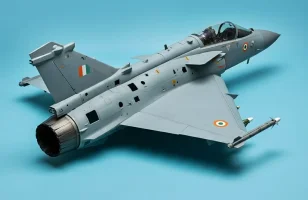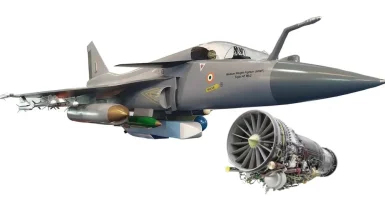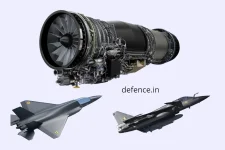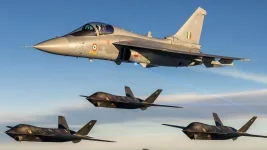- Views: 5K
- Replies: 16
The development of India's next-generation fighter jet, the Tejas Mk2, is advancing at a rapid pace, with Hindustan Aeronautics Limited (HAL) leveraging cutting-edge digital manufacturing techniques to meet its ambitious timelines.
The state-owned aerospace and defence company confirmed that key components are already being produced, positioning the first prototype for a scheduled rollout in early 2026.
According to HAL's Chairman and Managing Director, DK Sunil, the project has moved into a critical phase of construction. "Parts are being manufactured, and we are now into sub-assemblies, with production of the wings and fuselage going on," he stated in a recent interview.
HAL has set a firm target to unveil the first aircraft between January and March of 2026.
Following the rollout, the aircraft will undergo initial power-on and extensive ground checks, with its crucial maiden flight anticipated later the same year.
A significant factor accelerating the production schedule is HAL's adoption of advanced digital technology. Unlike previous aircraft developed using traditional physical drawings, the Tejas Mk2 is being built from the ground up using precise 3D digital models. This "digital thread" approach allows for greater accuracy in manufacturing.
After components are fabricated, they are meticulously checked with laser scanners to ensure they conform perfectly to the digital blueprint, a process that enhances both the speed and precision of the assembly.
While these digital manufacturing methods mark a major leap forward, DK Sunil noted that a complete "digital twin"—a virtual replica of the aircraft for real-time simulation and testing—is a future goal currently in development.
HAL is establishing a dedicated data cloud to support this capability, which will further streamline testing and maintenance throughout the aircraft's lifecycle.
The Tejas Mk2 is being developed as a 4.5-generation Medium Weight Fighter, representing a substantial upgrade over the existing Tejas Mk1 and the upcoming Mk1A variants.
Officially sanctioned for development by the Cabinet Committee on Security (CCS), the Mk2 is designed with superior capabilities, including a higher payload capacity of 6,500 kg, an extended range, and 11 hardpoints for mounting weapons and sensors.
It will be powered by a single, more powerful General Electric F414-INS6 engine, which has already been contracted for supply.
The Indian Air Force (IAF) plans for the Tejas Mk2 to be a cornerstone of its future fleet, eventually replacing its ageing squadrons of Jaguar and Mirage 2000 jets in the 2035-2040 timeframe.
HAL anticipates a substantial order from the Indian government for at least eight squadrons, which would translate to between 100 and 130 aircraft.
While a formal order from the IAF is yet to be placed, the progress of the Tejas Mk2 programme is seen as a major boost for India’s goal of self-reliance, encapsulated in the 'Make in India' initiative.
The successful development and induction of this advanced indigenous fighter will significantly reduce the nation's dependence on foreign military hardware and cement HAL's position as a capable producer of world-class combat aircraft.




